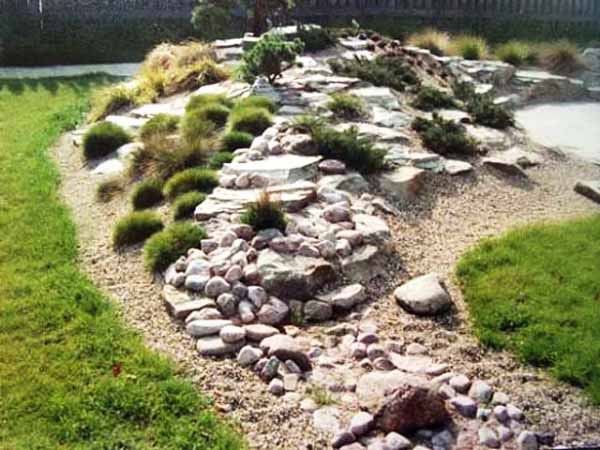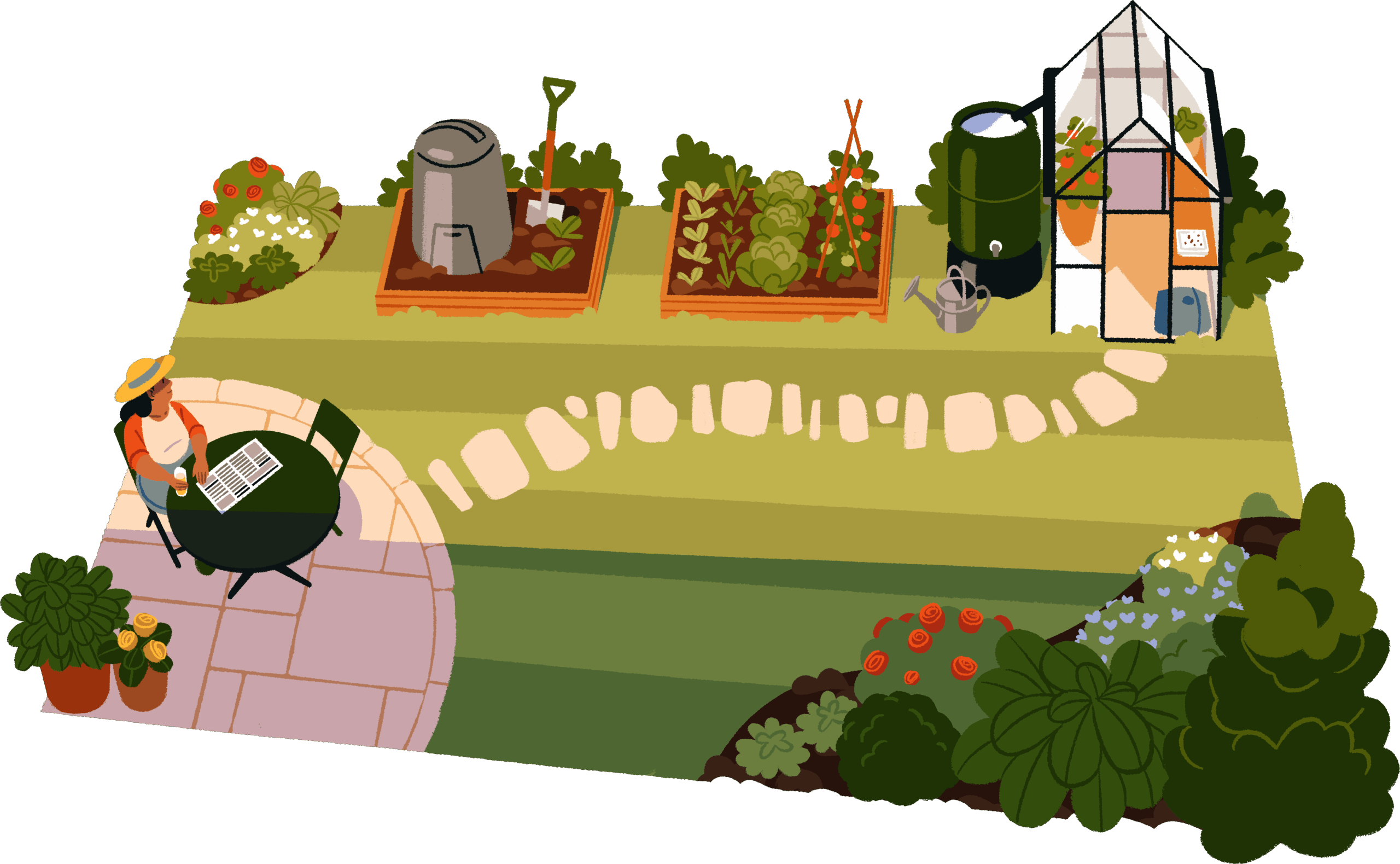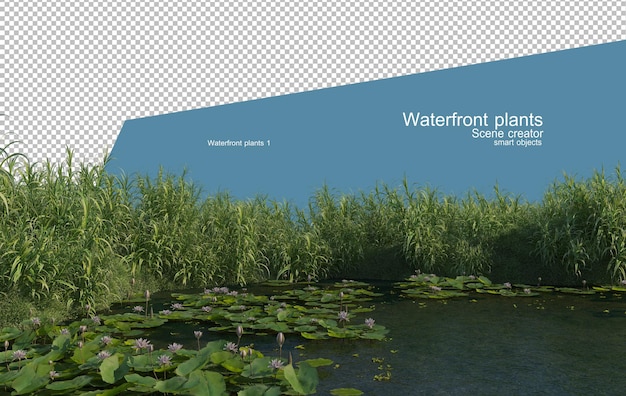
Designing a Rock Garden Landscape: A Comprehensive Guide
Rock gardens, also known as alpine gardens, offer a unique and captivating way to showcase the beauty of rocks and alpine plants. They mimic natural mountain landscapes, bringing a touch of rugged elegance to your backyard. Designing a rock garden landscape requires careful planning, consideration of various elements, and a bit of creativity. This comprehensive guide will walk you through the process, from understanding the basics to selecting the right plants and maintaining your rock garden for years to come.
Understanding Rock Gardens
Before diving into the design process, it’s essential to understand what constitutes a rock garden. A rock garden is essentially a garden that prominently features rocks and stones, often combined with plants that thrive in well-drained soil and sunny conditions. These plants are typically alpine or subalpine species, but many other drought-tolerant or low-growing plants can also be incorporated. The arrangement of rocks should appear natural, creating pockets and crevices for plants to grow.
The appeal of a rock garden lies in its ability to blend the stark beauty of rocks with the delicate charm of flowering plants. It’s a landscape feature that can be both visually stunning and ecologically beneficial, providing habitat for insects and other small creatures.
Planning Your Rock Garden
The first step in designing a rock garden landscape is careful planning. Consider the following factors:
1. Site Selection
The location of your rock garden is crucial for its success. Choose a site that receives at least six hours of sunlight per day. A south-facing slope is ideal, as it provides excellent drainage and sun exposure. Avoid areas that are prone to waterlogging or heavy shade. If you don’t have a naturally sloping area, you can create one by building up the soil with rocks and gravel.
Consider the existing landscape and how the rock garden will integrate with it. Will it be a focal point in your yard, or will it blend seamlessly with the surrounding environment? Think about the size and shape of the area you have available and how that will influence your design.
2. Soil Preparation
Proper soil preparation is essential for the health of your rock garden plants. Most alpine plants require well-drained soil that is low in organic matter. Heavy clay soils should be amended with gravel, sand, and compost to improve drainage. Aim for a soil mixture that is about one-third gravel, one-third sand, and one-third compost.
Test your soil’s pH level. Most rock garden plants prefer a slightly acidic to neutral pH (between 6.0 and 7.0). You can adjust the pH by adding lime to raise it or sulfur to lower it.
3. Rock Selection
The type of rocks you choose will greatly influence the overall look of your rock garden. Select rocks that are native to your region, as they will blend more naturally with the surrounding landscape. Consider the size, shape, and color of the rocks. A variety of sizes and shapes will create a more natural and visually interesting effect.
Larger rocks should be used as the foundation of your rock garden, providing stability and creating focal points. Smaller rocks can be used to fill in gaps and create pathways. Avoid using rocks that are too uniform in size or shape, as this can look artificial.
When selecting rocks, think about the overall style you want to achieve. For a more rugged and natural look, choose rocks with rough textures and irregular shapes. For a more formal look, choose rocks with smoother surfaces and more defined shapes.
4. Design Layout
Before you start placing rocks, create a design layout on paper. This will help you visualize the final product and make adjustments as needed. Consider the flow of the landscape and how the rocks will be arranged to create a natural-looking environment.
Think about the placement of larger rocks, as they will be the focal points of your rock garden. Arrange them in a way that creates interest and draws the eye. Use smaller rocks to fill in gaps and create pathways. Consider incorporating vertical elements, such as upright rocks or small rock formations, to add height and dimension.
Don’t be afraid to experiment with different layouts until you find one that you like. Remember, the goal is to create a natural-looking landscape that showcases the beauty of rocks and plants.
Choosing the Right Plants
The plants you choose will bring your rock garden to life. Select plants that are well-suited to the conditions in your garden, including sunlight, soil type, and climate. Alpine plants are a popular choice for rock gardens, as they are adapted to growing in well-drained soil and sunny conditions. However, many other drought-tolerant or low-growing plants can also be incorporated.
1. Alpine Plants
Alpine plants are plants that grow in mountainous regions, typically above the tree line. They are adapted to growing in harsh conditions, including cold temperatures, strong winds, and well-drained soil. Some popular alpine plants for rock gardens include:
- Sedums: These succulent plants come in a variety of shapes and colors and are very drought-tolerant.
- Sempervivums: Also known as hen and chicks, these plants form rosettes of fleshy leaves and are very easy to grow.
- Dianthus: These flowering plants have a sweet fragrance and come in a variety of colors.
- Aubrieta: This low-growing plant produces masses of small, colorful flowers in the spring.
- Campanula: These bellflower plants come in a variety of sizes and colors and are very attractive to pollinators.
2. Drought-Tolerant Plants
Drought-tolerant plants are plants that are adapted to growing in dry conditions. They are a good choice for rock gardens, as they can withstand periods of drought and require less watering than other plants. Some popular drought-tolerant plants for rock gardens include:
- Lavender: This fragrant plant is known for its beautiful purple flowers and its ability to attract pollinators.
- Rosemary: This aromatic herb is a versatile plant that can be used for cooking and gardening.
- Thyme: This low-growing herb is a great ground cover and comes in a variety of flavors and fragrances.
- Yarrow: This flowering plant has fern-like foliage and produces clusters of colorful flowers.
- Gazania: These daisy-like flowers come in a variety of colors and are very drought-tolerant.
3. Low-Growing Plants
Low-growing plants are plants that stay close to the ground, creating a carpet-like effect. They are a good choice for rock gardens, as they can help to fill in gaps and create a more natural-looking landscape. Some popular low-growing plants for rock gardens include:
- Creeping Thyme: This low-growing herb is a great ground cover and comes in a variety of flavors and fragrances.
- Sedum spurium: This succulent plant forms a mat of fleshy leaves and produces clusters of pink flowers.
- Dwarf Candytuft: This low-growing plant produces masses of small, white flowers in the spring.
- Phlox subulata: Also known as creeping phlox, this plant forms a dense mat of needle-like foliage and produces masses of colorful flowers in the spring.
- Arenaria montana: This low-growing plant produces masses of small, white flowers in the spring and summer.
4. Consider Bloom Times
When selecting plants for your rock garden, consider their bloom times. Choose plants that bloom at different times of the year to ensure that your garden has color throughout the growing season. For example, you could include plants that bloom in the spring, summer, and fall.
Building Your Rock Garden
Once you have planned your rock garden and selected your plants, it’s time to start building it. Follow these steps to create a beautiful and functional rock garden:
1. Prepare the Site
Clear the area of any existing vegetation, rocks, or debris. Dig down to a depth of about 12 inches and remove any large rocks or roots. Amend the soil with gravel, sand, and compost to improve drainage.
2. Place the Rocks
Start by placing the largest rocks first, as they will be the foundation of your rock garden. Arrange them in a way that creates interest and draws the eye. Use smaller rocks to fill in gaps and create pathways. Consider incorporating vertical elements, such as upright rocks or small rock formations, to add height and dimension.
When placing rocks, make sure they are stable and secure. You may need to bury them slightly to provide support. Use a level to ensure that the rocks are placed evenly.
3. Plant the Plants
Once the rocks are in place, it’s time to plant the plants. Dig small holes in the soil between the rocks and plant the plants according to their individual needs. Water the plants thoroughly after planting.
When planting, consider the size and shape of the plants and how they will look in relation to the rocks. Choose plants that complement the rocks and create a harmonious landscape.
4. Add Mulch
Mulch helps to retain moisture in the soil, suppress weeds, and regulate soil temperature. Use a mulch that is appropriate for rock gardens, such as gravel, crushed stone, or bark chips. Apply a layer of mulch around the plants, being careful not to bury the stems or leaves.
5. Water and Maintain
Water your rock garden regularly, especially during dry periods. However, be careful not to overwater, as this can lead to root rot. Remove any weeds that appear in the garden. Fertilize the plants sparingly, using a fertilizer that is specifically formulated for rock garden plants.
Prune the plants as needed to maintain their shape and size. Remove any dead or diseased foliage. Divide the plants every few years to prevent them from becoming overcrowded.
Maintaining Your Rock Garden
Maintaining a rock garden requires regular attention to ensure its health and beauty. Here are some tips for maintaining your rock garden:
1. Watering
Water your rock garden regularly, especially during dry periods. However, be careful not to overwater, as this can lead to root rot. Check the soil moisture level before watering and water only when the soil is dry to the touch.
Use a soaker hose or drip irrigation system to water your rock garden. This will help to deliver water directly to the roots of the plants and prevent water from splashing on the leaves.
2. Weeding
Weeds can quickly take over a rock garden if left unchecked. Remove any weeds that appear in the garden as soon as possible. Use a weeding tool to remove the entire weed, including the roots.
Mulch helps to suppress weeds. Apply a layer of mulch around the plants to prevent weeds from germinating.
3. Fertilizing
Rock garden plants typically do not require a lot of fertilizer. Fertilize the plants sparingly, using a fertilizer that is specifically formulated for rock garden plants. Apply the fertilizer in the spring, before the plants begin to grow actively.
Avoid using fertilizers that are high in nitrogen, as this can promote excessive growth and make the plants more susceptible to disease.
4. Pruning
Prune the plants as needed to maintain their shape and size. Remove any dead or diseased foliage. Prune the plants after they have finished flowering.
Use sharp, clean pruning shears to avoid damaging the plants. Cut the stems back to a healthy bud or branch.
5. Dividing
Divide the plants every few years to prevent them from becoming overcrowded. Dig up the plants in the spring or fall and divide them into smaller clumps. Replant the clumps in a new location or in the same location after amending the soil.
Dividing the plants helps to rejuvenate them and promote healthy growth.
Rock Garden Design Ideas
Here are some rock garden design ideas to inspire you:
- Alpine Meadow: Create a rock garden that mimics an alpine meadow, with a variety of flowering plants and grasses.
- Zen Garden: Create a rock garden that is inspired by Japanese Zen gardens, with carefully placed rocks and gravel.
- Waterfall Garden: Incorporate a waterfall into your rock garden to create a soothing and tranquil environment.
- Container Garden: Create a rock garden in a container, using a variety of rocks and plants.
- Succulent Garden: Create a rock garden that features a variety of succulents, which are drought-tolerant and easy to care for.
Conclusion
Designing a rock garden landscape is a rewarding experience that can bring beauty and tranquility to your outdoor space. By carefully planning the design, selecting the right plants, and maintaining the garden properly, you can create a stunning landscape feature that will be enjoyed for years to come. Remember to choose rocks that complement your home and existing landscaping. The plants you choose should thrive in the specific conditions of your yard. Don’t be afraid to experiment with different layouts and plant combinations until you achieve the desired look. The most important thing is to create a space that reflects your personal style and brings you joy.
With a little effort and creativity, you can transform your yard into a captivating rock garden that showcases the beauty of nature.


